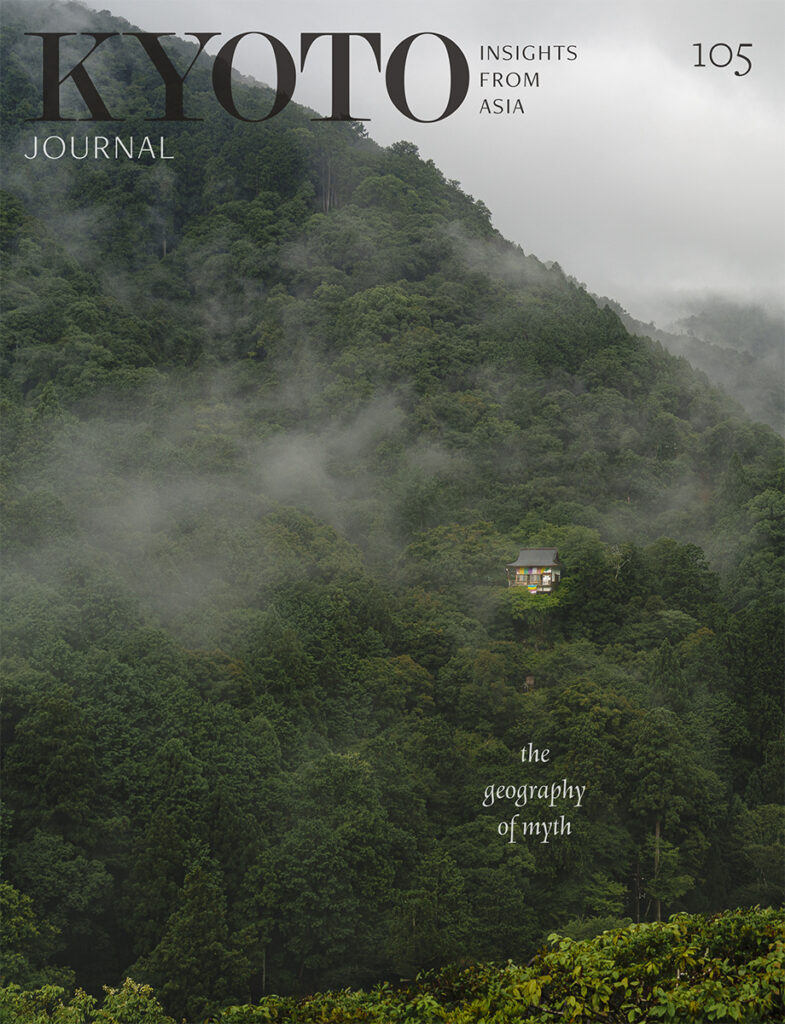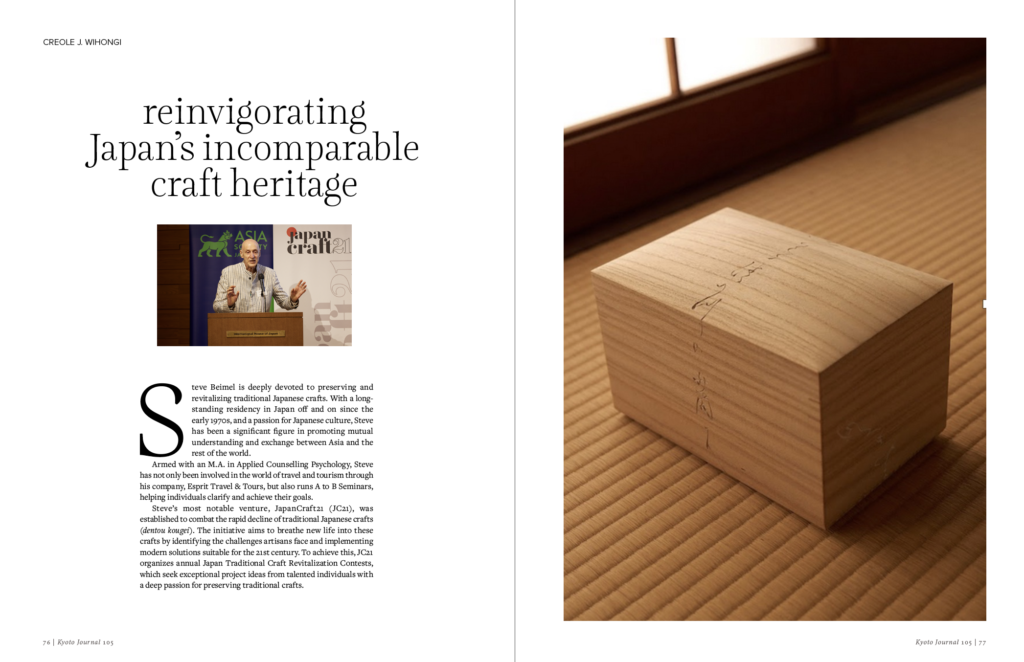
The all-volunteer Kyoto Journal has released a new digital issue: KJ 105: The Geography of Myth.
Historical visions and an innovative strategy to revitalize Kyoto crafts
KJ 105 encompasses vast arcs in Japan’s mythical history and social geography through articles, photo-essays, and intriguing excerpts from the latest books by some of our favorite KJ-associated authors.
- Off the Beaten Tracks in Japan: A Journey by Train from Hokkaido to Kyushu: John Dougill, visiting Mt. Takachiho in southern Kyushu, examines the founding of the nation under Emperor Jimmu in the context of a Chinese imperial expedition to Japan by an eminent alchemist seeking the elixir of everlasting life.
- Umui: A Journey Across Okinawa: Everett Brown’s mesmerizing photos and meditative observations from Okinawa reveal deep traces of a shamanic past.
- Hidden Japan: An Astonishing World of Thatched Villages, Ancient Shrines and Primeval Forests: Alex Kerr laments the impending loss of a “Jurassic Beach” on the relatively unspoiled southern isle of Amami Oshima.
- Empty Kyoto: photographer Daniel Sofer shares visions from his newly crowd-funded book documenting unprecedented views of the city’s signature attractions during Covid lockdown.
- Arcs and Circles: Marc Peter Keane reflects on the meaning of emptiness in Buddhism, garden design and everyday experience.
- 100 Objects in My Old Japanese House: Writer/illustrator Rebecca Otowa documents the heritage accumulated in her family’s 400-year-old farmhouse.

Remo Notarianni chronicles cinematographer Christopher Doyle’s ongoing practice of filming in the surprisingly rich “empty” environment of deserts. Poet Amy Uyematsu revisits Manzanar, the WWII desert internment camp where her parents were confined, and yet maintained their culture. Fiction writer Marianne Villanueva explores contradictory accounts of family myth in the Philippines. Maureen Tai revisits childhood memories in Ipoh, Malaysia. Rick Elizaga experiments with moss and an AI image generator. Historian Hyde Fras shares insights into Prince Shotoku Taishi’s pre-Nara constitution, and Chris Goto-Jones finds lessons for today in the late-12th century hermit life of Kamo no Chomei, author of the Hojoki.

A special feature is a fascinating and informative interview by Creole Wihongi with Steve Beimel, the inspiring founder of CraftJapan21, an entrepreneurial organization that is actively applying successful innovative strategies to revitalize essential Kyoto crafts and preserve their heritage of specialized skills. A companion piece by Creole explores the first-hand experience of visitor Ariston Zhou, currently apprenticing with a longstanding Kyoto woodcraft company.
Plus haiku by Deborah P Kolodji, reviews, and a ramble by Robert Brady. Available now as a download from KJ’s website.
Also worth noting: We have invitations out for participation in our two upcoming issues: KJ 106 (Fluidity of Culture) and KJ 107 (Fire & Kyoto). For further details, please subscribe to our newsletter.
